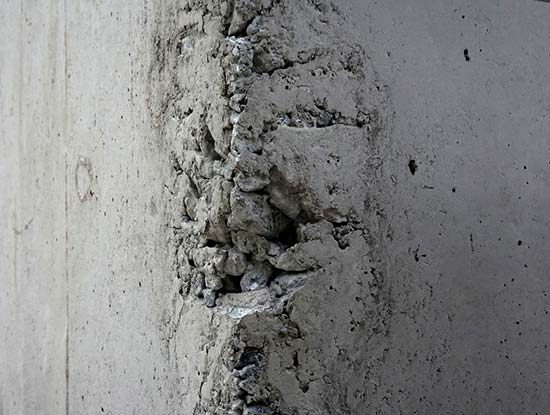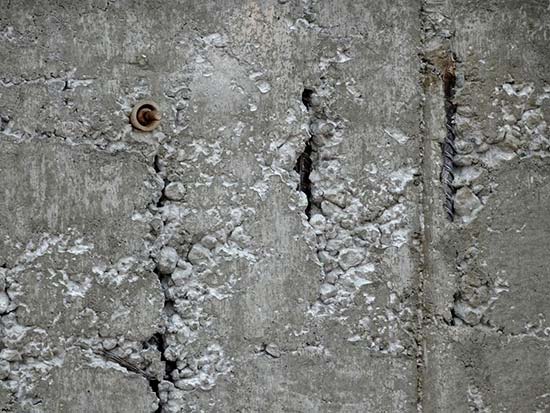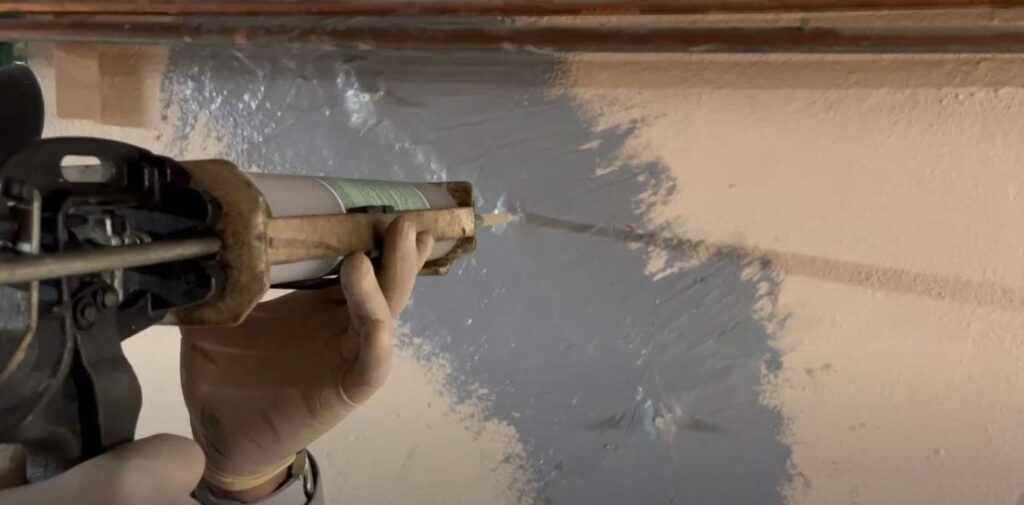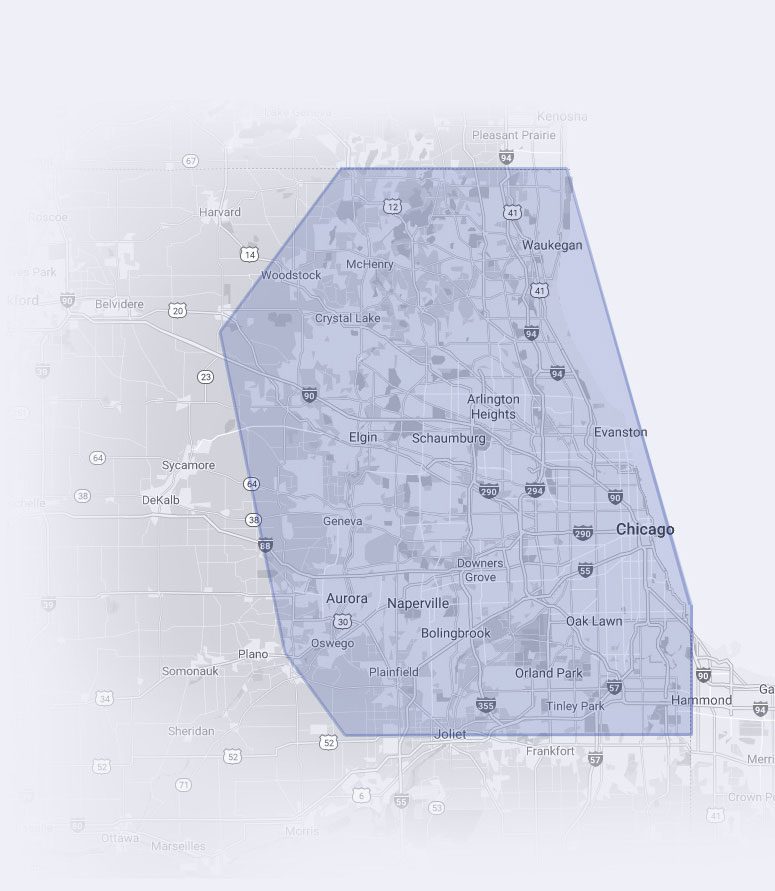What Is Concrete Honeycombing?
Concrete honeycombing is when areas of your foundation walls, floors, or columns begin to deteriorate, leaving behind coarse, brittle, and pitted surfaces. Honeycombing can appear on both the outside and inside of your concrete. Early signs of honeycombing are usually a cosmetic problem, but letting them worsen can lead to structural and waterproofing issues.
Causes Of Concrete Honeycombing
Leading causes of concrete honeycombing include,
- Improper workability of the concrete – Workability is how easily new concrete can be mixed, placed, consolidated, and finished with minimal loss of homogeneity (a balance of components).
- Improper balance of components – If there is too much of one component in a concrete mixture, such as water, it could lead to a separation of aggregates and mortar.
- Improper vibration – Freshly poured concrete must be vibrated to eliminate any air bubbles or pockets. If this is improperly done or not done at all, it could lead to honeycombing.
- Improper pouring – If concrete is poured too high, it could cause the aggregates and mortar to separate.
- Improper reinforcing – Too much steel in a foundation wall or floor can prevent the concrete from spreading evenly.
Effects Of Concrete Honeycombing


Honeycombing affects your foundation in various negative ways if you don’t treat it fast.
- Water Damage – Honeycombing concrete can allow outside groundwater to seep into your basement or crawl space foundation.
- Structural Damage – If left untreated, honeycombing can grow and affect the structural integrity of your foundation walls or columns.
- Cosmetic Damage – Honeycombing concrete ruins the look of your concrete walls and lowers the value of your home.

Types Of Concrete Honeycombing
- Low risk – Depth is less than 25 mm.
- Medium risk – Deeper than 25 mm with no exposed steel rebar.
- High risk – Deeper than 25 mm with exposed steel rebar.
How The Real Seal Repairs Honeycombing
The Real Seal Basement Waterproofing and Foundation Repair uses a 2-part epoxy injection to repair honeycombing concrete. This injection will fill the voids inside the concrete until it’s solid again, leaving you a clean surface you can paint over.

Who To Call For Honeycomb Concrete Repair Near You
What Our Customers Are Saying
I was contacted promptly, and arranged an complimentary inspection for a few days later. I received a confirmation the day before the visit with background on the inspector, Jim.
Jim was thorough, inspecting a variety of places both inside and outside, and taking plenty of pictures. He took the time to review his findings with me, and provided several recommendations (none involving the need for Real Seal). Jim was friendly, knowledgeable, and ethical.
I was very impressed, and would have no hesitancy about using Real Seal in the future.
In the end, we didn't need to do the repair as it wasn't deemed a true hazard. Even though we didn't wind up using their services, I was happy for the in-depth analysis from Jeff and the team.
George, our technician, did an outstanding job with the repair. During the process, he discovered a 2x4 that had been bolted directly into the foundation wall—a possible cause of the cracking we were seeing. He explained how that kind of pressure can lead to long-term structural issues, which we never would have realized on our own. George not only fixed the problem, but also walked me through the repair process and what was being done to ensure the wall would be properly supported going forward.
Both Rob and George were professional, knowledgeable, and respectful throughout. It’s rare to find a company where both the inspection and the repair sides are this strong. I’d highly recommend Real Seal to anyone needing foundation repair or basement waterproofing. Their team brings both skill and great communication—exactly what you want for something as important as your home’s foundation.
If you have a crawlspace want to add square footage to your home (or have a nice new spot to wait out tornados), I highly recommend reaching out to Real Seal about a conversion.
Honeycomb Concrete Repair FAQs

Is honeycombing in reinforced concrete bad?

How do you test honeycombing in concrete?

Will honeycombing concrete worsen over time?
REQUEST A FREE ESTIMATE
SERVICE AREA
Waterproofing basements in Chicagoland and surrounding areas.



































